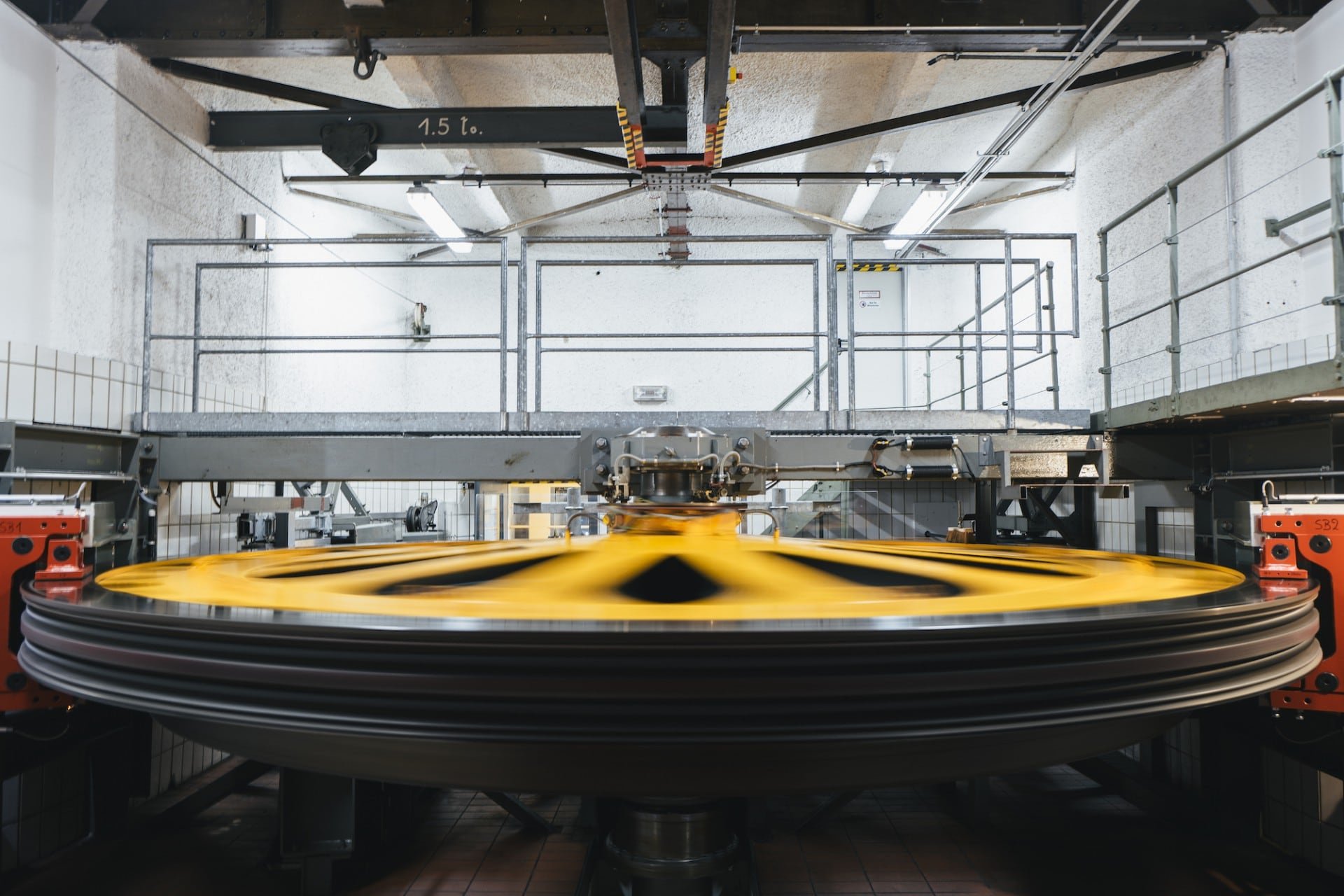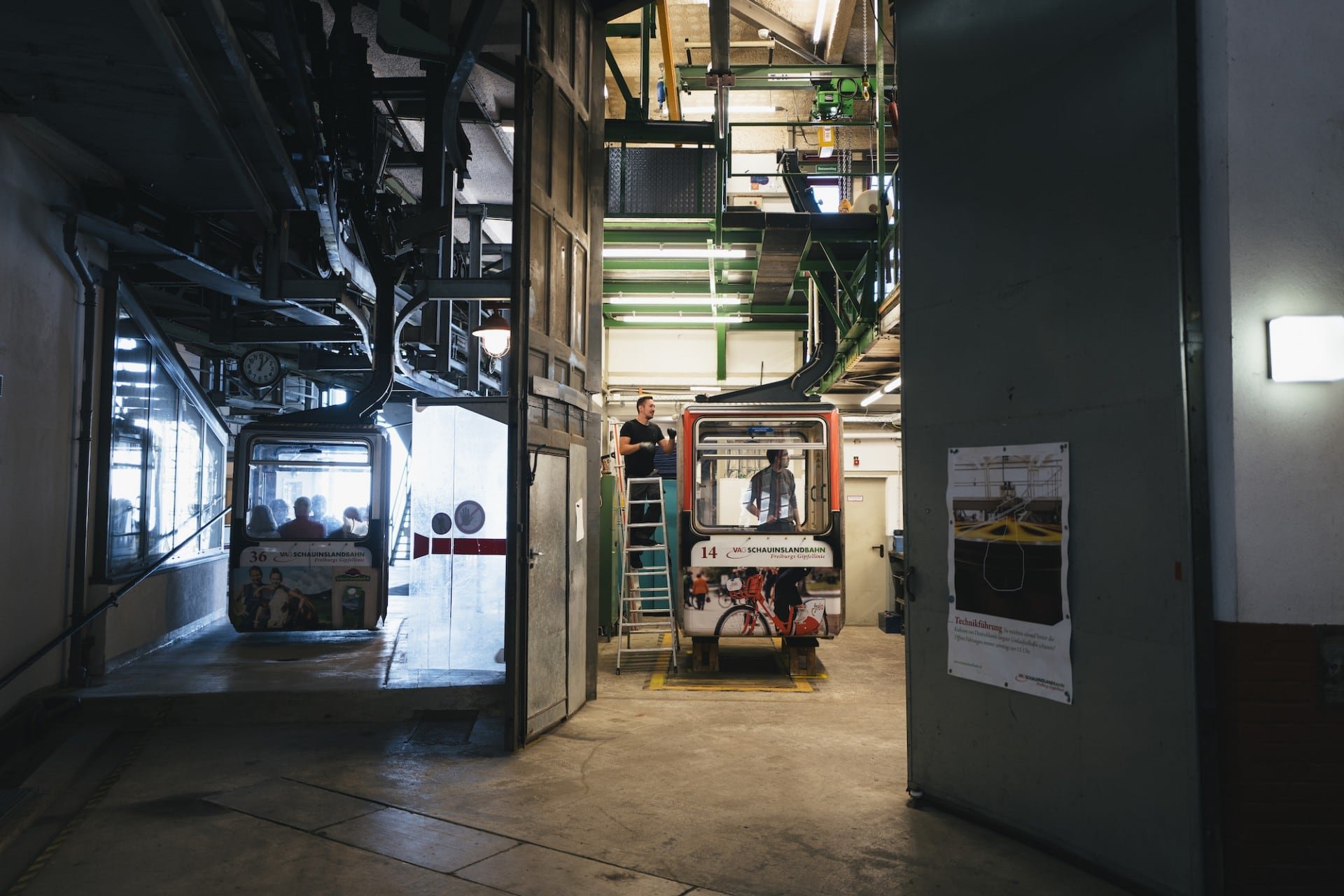Technical data of the Schauinslandbahn

How many supports does the Schauinslandbahn actually have? How thick is the suspension rope and what is the maximum number of passengers the railroad can carry in an hour? Here you can find out exciting technical details about the Schauinslandbahn, which opened in 1930 as the world's first large-cabin circulating ropeway and was converted in 1987 into Germany's first conductorless automatic ropeway with space for more than four people per cabin.
By the way: Safety is a top priority at the Schauinslandbahn. Every day, 13 qualified ropeway specialists ensure smooth operation. Over 230 maintenance and checks are carried out each year. These include, for example, visual and technical rope inspections, track maintenance, mechanical checks at the top and bottom stations, maintenance of the haul rope pulleys, technical maintenance of the drive, checks of the electronics and much more.

The Schauinslandbahn - a technical monument

For the first time in the world, the Schauinsland cable car was built using the revolving principle, which allows the gondolas to run continuously. For the first time, any number of cabins could be installed on the circulating rope. Originally, there were 10 cabins, each manned by a conductor, of which up to 8 were in motion at the same time. Since the reconstruction of the system in 1988, the railroad has been equipped with 37 somewhat smaller conductorless cabins. For reasons of preservation, the design of these cabins was based on the original cabins.
To this day, the Schauinslandbahn is the longest ropeway in Germany designed according to the circulating principle. Its length is 3600 m, overcoming a difference in altitude of 764 m.
The first circulating ropeway in the world
The peculiarity of the ropeway lies in its technical-historical significance as the first ropeway in the world for passenger transportation, which was designed according to the circulating system. This system has become exemplary for all modern small gondola systems. The structures of the upper, middle, tensioning and lower stations, the supports and the parts of the construction-period technology that have been preserved after the reconstruction still largely show the construction method of a ropeway of the time around 1930 according to the circulation principle. The good preservation of the original condition underlines and enhances its value as a source of technical history. In addition, there is the design value of the structural facilities and their construction details in detail. The task of combining a functionally well-designed engineering structure such as a cable car with architecture that blends into the landscape has been excellently solved.
Reasons of local history
The Schauinslandbahn has been deeply rooted in the consciousness of the local population for many decades, as evidenced by the efforts to preserve the railroad in the 1980s and in numerous press reports and publications.
Monument value
The public interest in the preservation of the Schauinslandbahn is based on the documentary and exemplary value of the installation for the technical-historical research of ropeways according to the circulating principle. As the first passenger ropeway in the world to be planned and built according to this system in the first third of the 20th century, the Schauinslandbahn also has rarity and age value.
The public interest in preservation is also based on the originality and integrity of the architecture and its equipment as well as the documentary and exemplary value for the study of transportation buildings. The individual components of the Schauinslandbahn, such as the upper, middle and lower stations as well as the 7 steel masts, form a material entity.
Open Monument Day
The Denkmalstiftung Baden-Württemberg organizes the popular "Open Monument Day" once a year under a different motto. Numerous cultural monuments are open to the public on this day and bear witness to the diversity and special nature of our region. The Schauinslandbahn, as a technical monument, also participates in this day every year with numerous activities. You will find the date and program in good time beforehand under Dates/Events.
